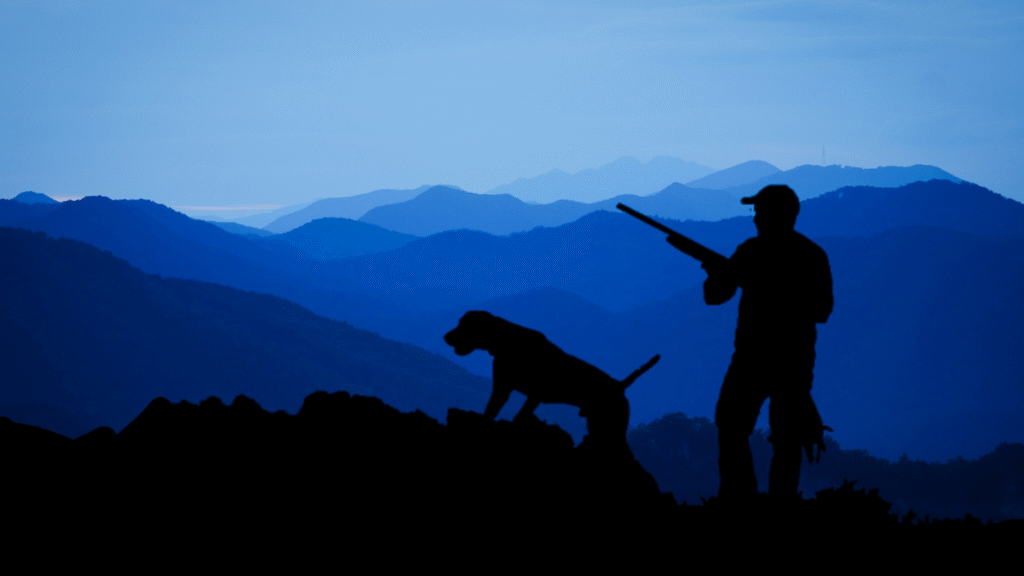Hunting in Asia is a practice steeped in history, culture, and survival, woven into the fabric of many communities across this vast continent. From the dense jungles of India to the rugged mountains of Mongolia, hunting has shaped traditions, provided food, and fostered deep connections with nature. Today, it’s a complex topic, balancing age-old customs with modern conservation needs. While some hunt for sustenance, others pursue it as a sport or cultural ritual, but strict laws and ethical concerns now guide the practice. Asia’s diverse landscapes—home to tigers, deer, and rare birds—offer unique hunting experiences, yet overexploitation threatens wildlife. This article dives into the world of hunting in Asia, exploring its cultural roots, legal frameworks, popular destinations, and the push for sustainability, offering insights for enthusiasts and curious readers alike.
The Cultural Roots of Hunting in Asia
Hunting in Asia dates back thousands of years, serving as a lifeline for ancient tribes and empires. In countries like India, Mongolia, and Japan, it was both a means of survival and a symbol of status. Royals hunted tigers and elephants, while indigenous groups like the Adivasis relied on small game for food. Archery and falconry, still practiced in Central Asia, reflect skills honed over centuries. For nomadic tribes in Mongolia, hunting with golden eagles is a sacred tradition, celebrated in festivals. These practices are more than sport—they’re a way to honor ancestors and stay connected to the land. Today, cultural hunting persists in rural areas, but modern ethics and laws shape how these traditions are carried out, ensuring respect for wildlife.
Indigenous Hunting Practices
Indigenous groups across Asia, like the Orang Asli in Malaysia or the Bhotiya in the Himalayas, hunt for food using traditional tools like bows, traps, and spears. These methods, passed down for generations, target small game like deer or birds, minimizing environmental impact. Such practices are often exempt from strict laws, recognizing their cultural and survival value.
Royal and Elite Hunting Traditions
In ancient Asia, hunting was a mark of power. Mughal emperors in India organized grand shikars (hunts) for tigers, while Japanese samurai hunted boar to prove bravery. These elite pursuits, often with lavish entourages, left behind art and stories. Today, such hunts are rare, replaced by regulated sport hunting or symbolic rituals in some regions.
Legal Frameworks Governing Hunting
Hunting in Asia is tightly regulated to protect wildlife and ecosystems. Countries like India ban hunting most species under the Wildlife Protection Act of 1972, except for specific cases like pest control. In contrast, Mongolia and Kyrgyzstan allow regulated hunting of species like ibex or argali sheep, with permits costing $5,000-$20,000. China restricts hunting to designated zones, while Japan permits controlled deer and boar hunts to manage overpopulation. Poaching remains a challenge, with illegal trade in tiger skins or rhino horns driving enforcement efforts. Hunters must secure licenses, follow seasonal restrictions, and respect quotas. Regulations vary widely, so researching local laws—through government websites or outfitters—is crucial to avoid hefty fines or jail time.
Country-Specific Regulations
India’s near-total hunting ban protects species like tigers, but allows culling invasive species like nilgai with permission. Mongolia requires foreign hunters to use licensed outfitters and pay conservation fees. Japan’s hunting season (November-February) targets deer and boar, requiring a gun or trap license. Always check with local wildlife departments for current rules.
Combating Illegal Hunting
Poaching threatens Asia’s biodiversity, with species like pangolins and rhinos at risk. Governments deploy rangers, drones, and anti-poaching units, while NGOs like WWF support community patrols. Penalties include years in prison or fines up to $10,000. Legal hunters can help by reporting suspicious activity, ensuring their pursuits don’t fuel black markets.
Popular Hunting Destinations in Asia
Asia’s diverse terrains make it a unique hunting destination, though opportunities are limited by strict laws. Mongolia’s Altai Mountains are famous for ibex and argali sheep hunts, drawing adventurers with their rugged beauty. Kyrgyzstan offers Marco Polo sheep hunts in the Pamirs, costing $15,000-$30,000 for a 10-day trip. Japan’s Hokkaido Island allows deer and boar hunting, blending sport with scenic forests. Russia’s Far East, including Siberia, permits brown bear and moose hunts under guided tours. These destinations require permits, local guides, and respect for conservation rules. Hunters enjoy not just the thrill but also the chance to experience Asia’s wild landscapes and local hospitality, making each trip unforgettable.
Mongolia’s Altai Mountains
Mongolia’s Altai region is a hunter’s paradise, home to ibex, argali, and wolves. Hunts are guided by locals, often on horseback, costing $5,000-$20,000. The harsh terrain demands fitness, but the vast steppes and cultural immersion—like staying in yurts—make it rewarding. Permits fund conservation, supporting local communities.
Japan’s Hokkaido Island
Hokkaido’s forests teem with sika deer and Yezo boar, hunted from November to February. Licenses cost $200-$500, and guided trips run $2,000-$5,000. Hunters enjoy stunning landscapes and local cuisine like venison. Strict quotas prevent overhunting, ensuring sustainable practices that balance ecology and tradition.
Ethical and Sustainable Hunting Practices
With Asia’s wildlife under pressure, ethical hunting is vital. Sustainable practices focus on preserving ecosystems while allowing regulated hunts. Hunters target abundant species, like deer in Japan, to control populations that damage crops. In Mongolia, permit fees fund anti-poaching and habitat restoration. Using non-lead ammunition and minimizing waste show respect for nature. Community-based hunting, where locals benefit economically, reduces illegal activity. Ethical hunters research outfitters, ensuring they follow conservation guidelines. By supporting licensed operations and respecting quotas, hunters contribute to wildlife protection, ensuring future generations can experience Asia’s natural heritage.
Community-Based Hunting Benefits
In Kyrgyzstan and Mongolia, hunting programs employ locals as guides, generating income for remote communities. Permit fees build schools or fund ranger patrols. This model, backed by groups like the Snow Leopard Trust, reduces poaching by giving locals a stake in conservation, creating a win-win for wildlife and people.
Minimizing Environmental Impact
Ethical hunters use eco-friendly gear, like biodegradable traps, and avoid sensitive habitats during breeding seasons. In Japan, hunters remove carcasses to prevent disease spread. Following “leave no trace” principles—packing out waste and respecting flora—ensures minimal disruption. Choosing outfitters with conservation certifications helps maintain Asia’s delicate ecosystems.
Challenges Facing Hunting in Asia
Hunting in Asia faces hurdles, from habitat loss to cultural shifts. Urbanization and deforestation shrink wildlife areas, pushing species like leopards closer to extinction. Climate change alters migration patterns, affecting game availability. Public opinion, especially in urban India and China, increasingly opposes hunting, favoring animal rights. Poaching and weak enforcement in some regions undermine legal efforts. High permit costs and complex regulations deter ethical hunters, while corruption in licensing systems persists. Balancing cultural traditions with conservation is tricky, as indigenous rights clash with modern bans. Addressing these challenges requires stronger laws, community engagement, and global cooperation to protect Asia’s wildlife.
Habitat Loss and Climate Change
Deforestation in Southeast Asia and Himalayan glacier melt reduce habitats for species like ibex and deer. Climate shifts disrupt food chains, making game scarcer. Hunters can support reforestation or donate to groups like the Wildlife Conservation Society, helping mitigate impacts and preserve hunting grounds.
Shifting Public Perceptions
Younger generations in Asia, influenced by global animal rights movements, view hunting skeptically. In India, campaigns against trophy hunting gain traction. Hunters counter this by promoting sustainable practices and educating others on how regulated hunting funds conservation, bridging the gap between tradition and modern values.
Preparing for a Hunting Trip in Asia
Planning a hunting trip in Asia requires careful research and preparation. Start by choosing a destination and verifying legal requirements—permits can take months to process. Hire a reputable outfitter, checking reviews on forums like HuntForever.org. Budget $5,000-$30,000, covering permits, guides, and travel. Pack for extreme weather, from Mongolia’s icy peaks to Malaysia’s humid jungles. Learn basic local phrases and customs to respect hosts. Ensure physical fitness for rugged terrains, and train with your weapon (bow or rifle) for accuracy. Vaccinations and travel insurance are musts. Finally, study conservation rules to hunt ethically, ensuring a safe, rewarding experience in Asia’s wilds.
Choosing the Right Outfitter
A good outfitter ensures a legal, safe hunt. Look for those registered with local wildlife boards, like Mongolia’s Hunting Association. Check client testimonials and ask about guide experience, success rates, and conservation practices. Reputable outfitters, costing $2,000-$10,000, handle permits and logistics, letting you focus on the hunt.
Gear and Safety Tips
Bring durable gear: waterproof boots, layered clothing, and a reliable weapon (check import rules). In bear country, carry pepper spray. Learn first aid and carry a satellite phone for remote areas. Follow guide instructions, respect wildlife, and avoid risky shots. Safety training, offered by outfitters, prepares you for emergencies.
Why Hunting in Asia Matters
Hunting in Asia is more than a sport—it’s a link to history, culture, and nature. For indigenous communities, it’s survival and identity. For conservation, regulated hunting funds protection efforts, saving species from poaching. It fosters respect for ecosystems, teaching patience and stewardship. Despite challenges like habitat loss, ethical hunting supports sustainable tourism, benefiting rural economies. For enthusiasts, it’s a chance to explore Asia’s wild beauty while contributing to its preservation. By embracing responsible practices, hunters ensure this tradition thrives, balancing human heritage with wildlife’s future.
Economic and Conservation Benefits
Hunting generates millions for Asian economies, with Mongolia’s permit fees funding parks and rangers. In Kyrgyzstan, hunting tourism employs 1,000+ locals annually. These funds protect species like snow leopards, showing how ethical hunting, when managed well, supports both wildlife and communities.
A Call to Respectful Hunting
If hunting in Asia calls to you, approach it with respect. Research laws, choose ethical outfitters, and support conservation. Whether stalking ibex in Mongolia or deer in Japan, honor the land and its creatures. Your hunt can preserve Asia’s wild heritage—start planning today for a meaningful adventure.



